
How to Use lipo 3.7: Examples, Pinouts, and Specs
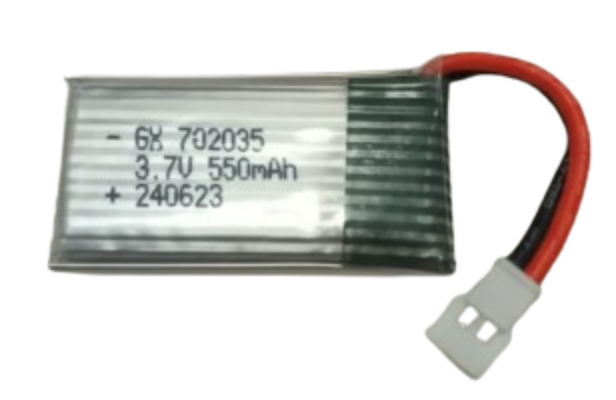
 Design with lipo 3.7 in Cirkit Designer
Design with lipo 3.7 in Cirkit DesignerIntroduction
The LiPo 3.7V battery is a lightweight, rechargeable lithium polymer battery with a nominal voltage of 3.7 volts. It is widely used in portable electronics, remote-controlled (RC) devices, drones, wearables, and other applications requiring compact, high-energy-density power sources. Its ability to deliver high discharge currents and its relatively small form factor make it a popular choice for modern electronic devices.
Explore Projects Built with lipo 3.7
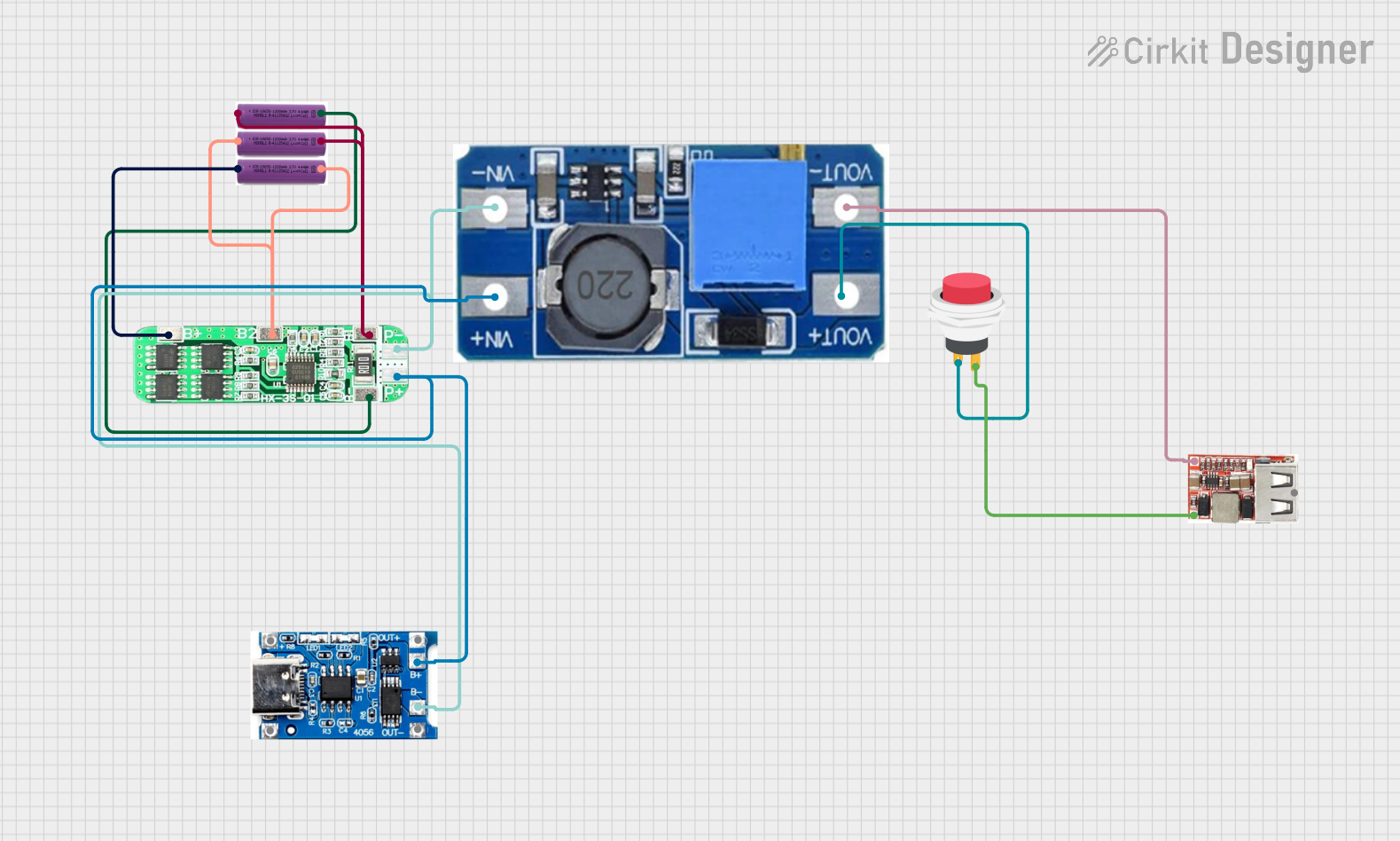
 Open Project in Cirkit Designer
Open Project in Cirkit Designer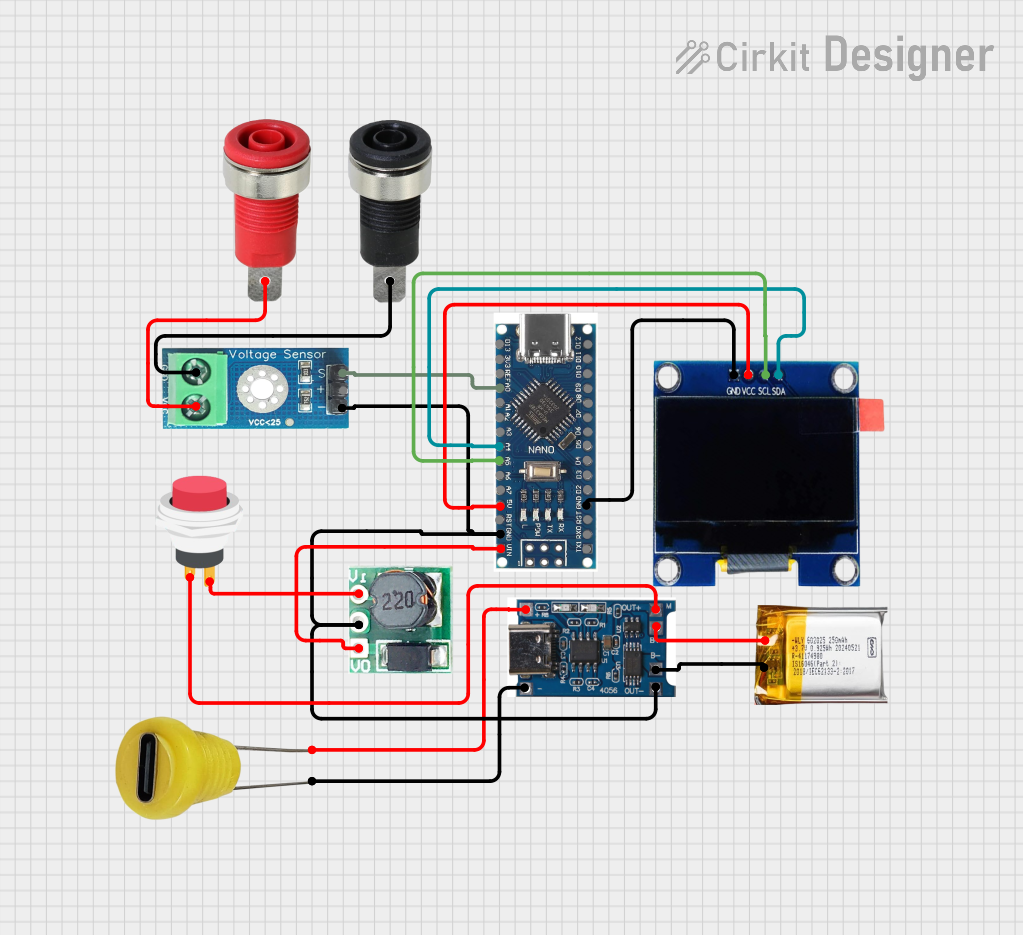
 Open Project in Cirkit Designer
Open Project in Cirkit Designer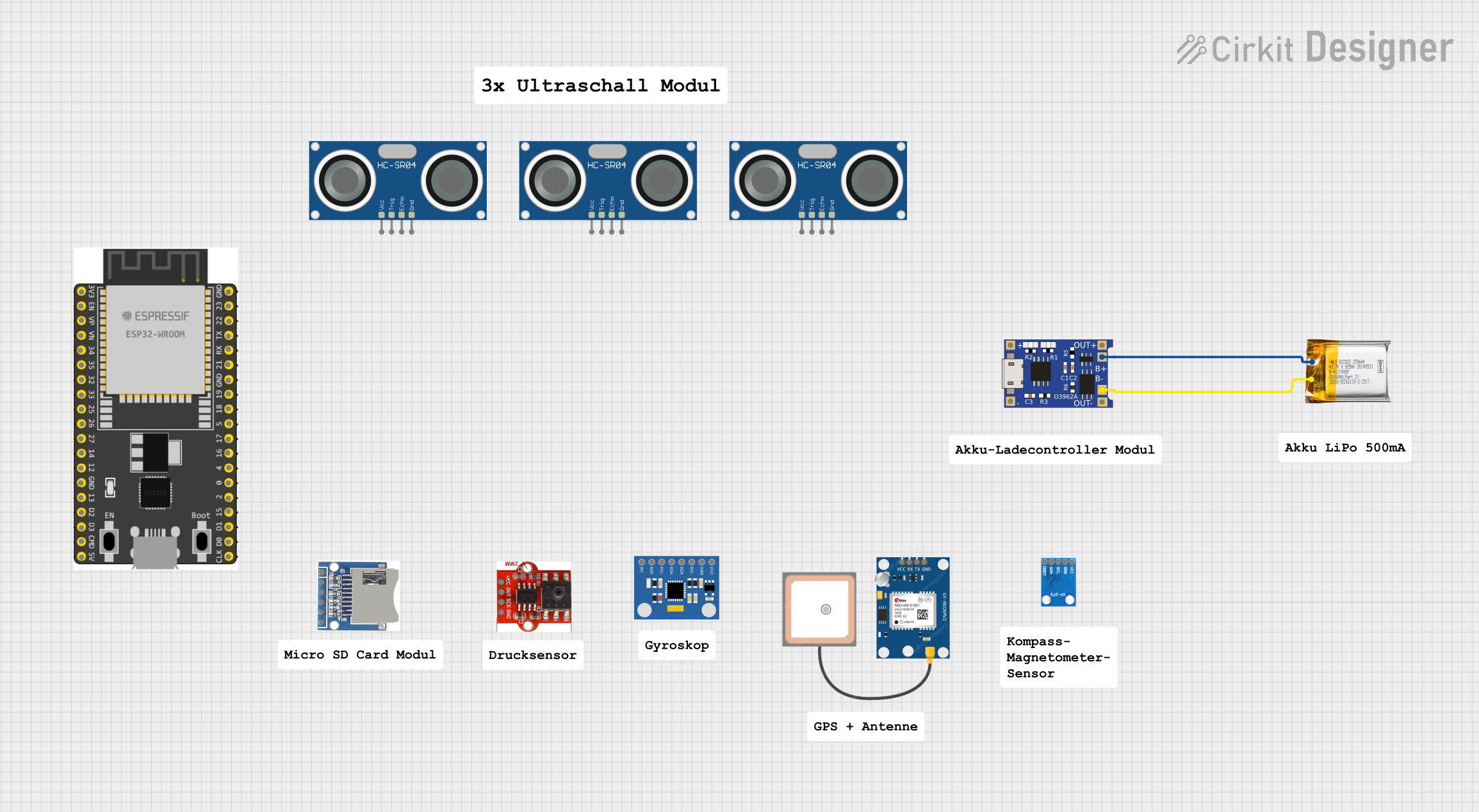
 Open Project in Cirkit Designer
Open Project in Cirkit Designer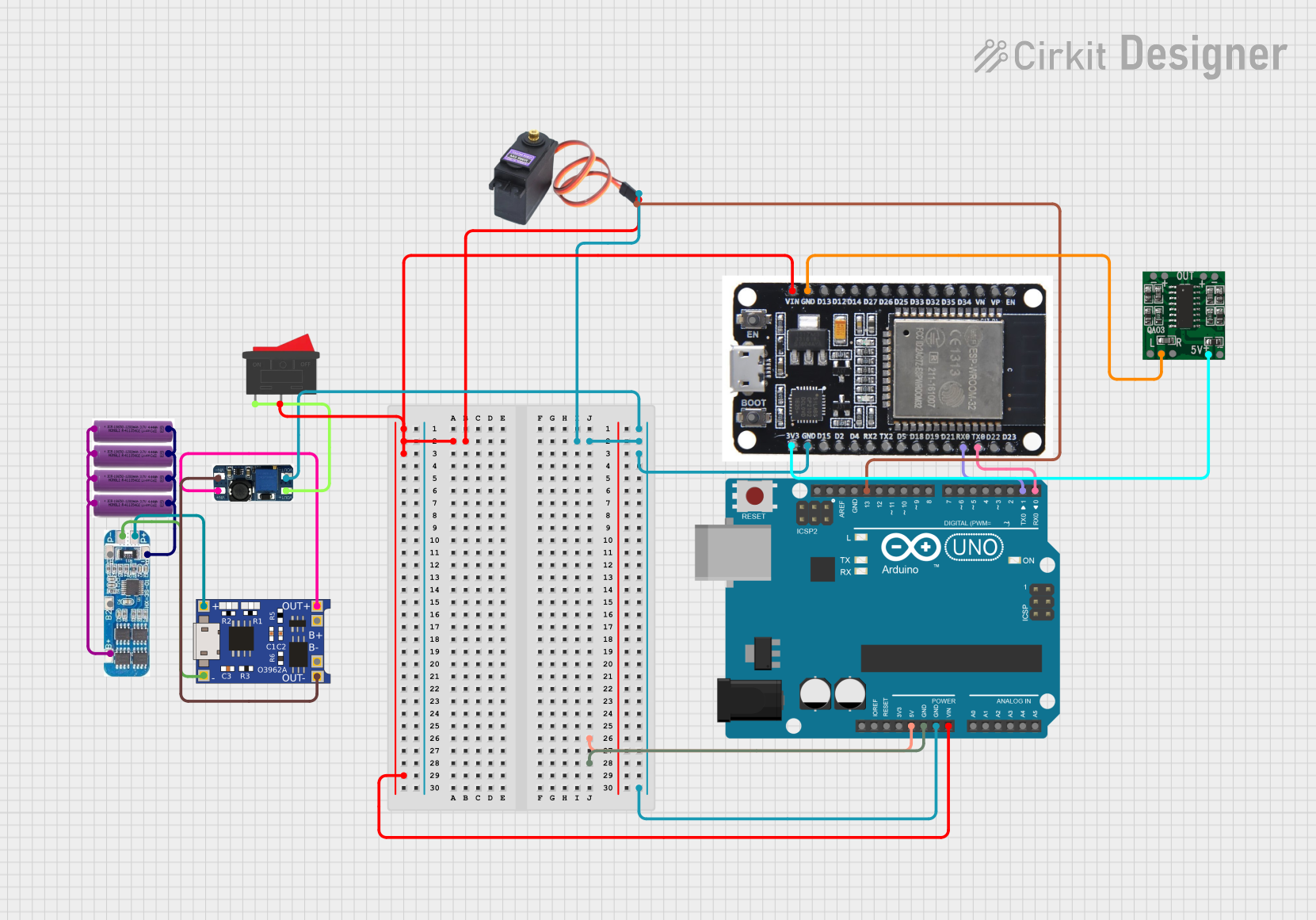
 Open Project in Cirkit Designer
Open Project in Cirkit DesignerExplore Projects Built with lipo 3.7

 Open Project in Cirkit Designer
Open Project in Cirkit Designer
 Open Project in Cirkit Designer
Open Project in Cirkit Designer
 Open Project in Cirkit Designer
Open Project in Cirkit Designer
 Open Project in Cirkit Designer
Open Project in Cirkit DesignerCommon Applications
- Portable electronics (e.g., smartphones, tablets, and wearables)
- Remote-controlled vehicles (e.g., drones, cars, and planes)
- IoT devices and embedded systems
- Robotics and small-scale automation projects
- Backup power supplies for low-power devices
Technical Specifications
Below are the key technical details of a typical LiPo 3.7V battery. Note that specific values may vary depending on the manufacturer and model.
| Parameter | Specification |
|---|---|
| Nominal Voltage | 3.7V |
| Fully Charged Voltage | 4.2V |
| Discharge Cutoff Voltage | 3.0V (varies by model, typically 2.7–3.0V) |
| Capacity Range | 100mAh to 5000mAh (varies by model) |
| Maximum Discharge Rate | 1C to 50C (varies by model) |
| Charging Current | Typically 0.5C to 1C |
| Charging Voltage | 4.2V (constant voltage) |
| Internal Resistance | 10–50 mΩ (varies by model) |
| Operating Temperature | 0°C to 45°C (charging), -20°C to 60°C (discharging) |
Pin Configuration
LiPo batteries typically have two or three wires for connection. Below is a description of the common pin configuration:
| Pin | Wire Color | Description |
|---|---|---|
| + | Red | Positive terminal (V+) |
| - | Black | Negative terminal (V-) |
| BMS | White/Yellow | Battery Management System (optional, for monitoring voltage or temperature) |
Usage Instructions
How to Use the LiPo 3.7V Battery in a Circuit
- Connection: Connect the red wire to the positive terminal of your circuit and the black wire to the negative terminal. If the battery includes a BMS wire, connect it to the appropriate monitoring pin of your device or microcontroller.
- Charging: Use a dedicated LiPo battery charger that supports 3.7V batteries. Ensure the charger provides a constant current (CC) and constant voltage (CV) charging profile.
- Discharging: Avoid discharging the battery below its cutoff voltage (typically 3.0V) to prevent damage. Use a low-voltage cutoff circuit or a battery management system (BMS) to protect the battery.
- Mounting: Secure the battery in your device using a non-conductive adhesive or holder to prevent physical damage.
Important Considerations and Best Practices
- Avoid Overcharging: Never charge the battery above 4.2V, as this can cause overheating or damage.
- Avoid Over-Discharging: Discharging below 3.0V can permanently reduce the battery's capacity.
- Temperature Safety: Do not charge or discharge the battery outside the recommended temperature range.
- Storage: Store the battery at approximately 3.7–3.8V (nominal voltage) in a cool, dry place when not in use for extended periods.
- Protection Circuitry: Use a BMS or protection circuit to prevent overcharging, over-discharging, and short circuits.
Example: Using a LiPo 3.7V Battery with an Arduino UNO
Below is an example of how to monitor the voltage of a LiPo 3.7V battery using an Arduino UNO and a voltage divider circuit.
Circuit Setup
- Connect the battery's positive terminal to a voltage divider circuit (e.g., two resistors: R1 = 10kΩ, R2 = 10kΩ).
- Connect the output of the voltage divider to an analog input pin (e.g., A0) on the Arduino UNO.
- Connect the battery's negative terminal to the Arduino's GND.
Arduino Code
// LiPo Battery Voltage Monitoring with Arduino UNO
// This code reads the battery voltage using a voltage divider and displays it
// on the Serial Monitor. Ensure the voltage divider reduces the max voltage
// (4.2V) to within the Arduino's ADC range (0-5V).
const int batteryPin = A0; // Analog pin connected to the voltage divider
const float R1 = 10000.0; // Resistor R1 value in ohms
const float R2 = 10000.0; // Resistor R2 value in ohms
const float adcResolution = 1023.0; // 10-bit ADC resolution
const float referenceVoltage = 5.0; // Arduino reference voltage (5V)
void setup() {
Serial.begin(9600); // Initialize Serial communication
}
void loop() {
int adcValue = analogRead(batteryPin); // Read ADC value
float voltageDividerRatio = (R1 + R2) / R2; // Calculate divider ratio
float batteryVoltage = (adcValue / adcResolution) * referenceVoltage *
voltageDividerRatio; // Calculate battery voltage
Serial.print("Battery Voltage: ");
Serial.print(batteryVoltage);
Serial.println(" V");
delay(1000); // Wait 1 second before the next reading
}
Troubleshooting and FAQs
Common Issues and Solutions
Battery Not Charging
- Cause: Faulty charger or incorrect charging voltage.
- Solution: Verify the charger is designed for 3.7V LiPo batteries and outputs 4.2V during charging.
Battery Drains Quickly
- Cause: Over-discharge or aging battery.
- Solution: Avoid discharging below 3.0V and replace the battery if it has degraded.
Battery Swelling
- Cause: Overcharging, overheating, or physical damage.
- Solution: Stop using the battery immediately and dispose of it safely.
Arduino Reads Incorrect Voltage
- Cause: Incorrect resistor values in the voltage divider or poor connections.
- Solution: Double-check the resistor values and ensure secure connections.
FAQs
Q: Can I use a LiPo 3.7V battery without a BMS?
- A: While possible, it is not recommended. A BMS protects the battery from overcharging, over-discharging, and short circuits.
Q: How do I safely dispose of a LiPo battery?
- A: Discharge the battery completely, then take it to a certified e-waste recycling facility.
Q: Can I connect multiple LiPo 3.7V batteries in series or parallel?
- A: Yes, but ensure you use batteries of the same capacity and charge level. Use a BMS designed for series or parallel configurations.
Q: How long does a LiPo 3.7V battery last?
- A: Typically, a LiPo battery lasts 300–500 charge cycles, depending on usage and care.